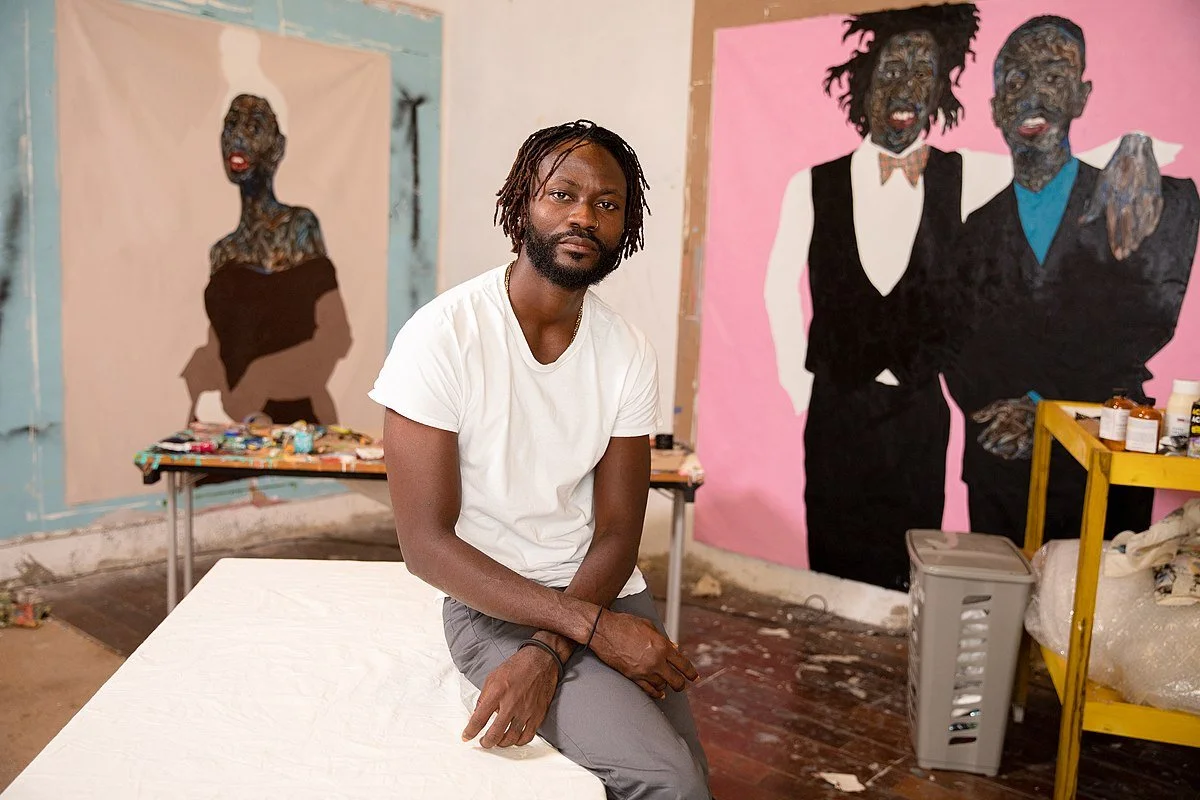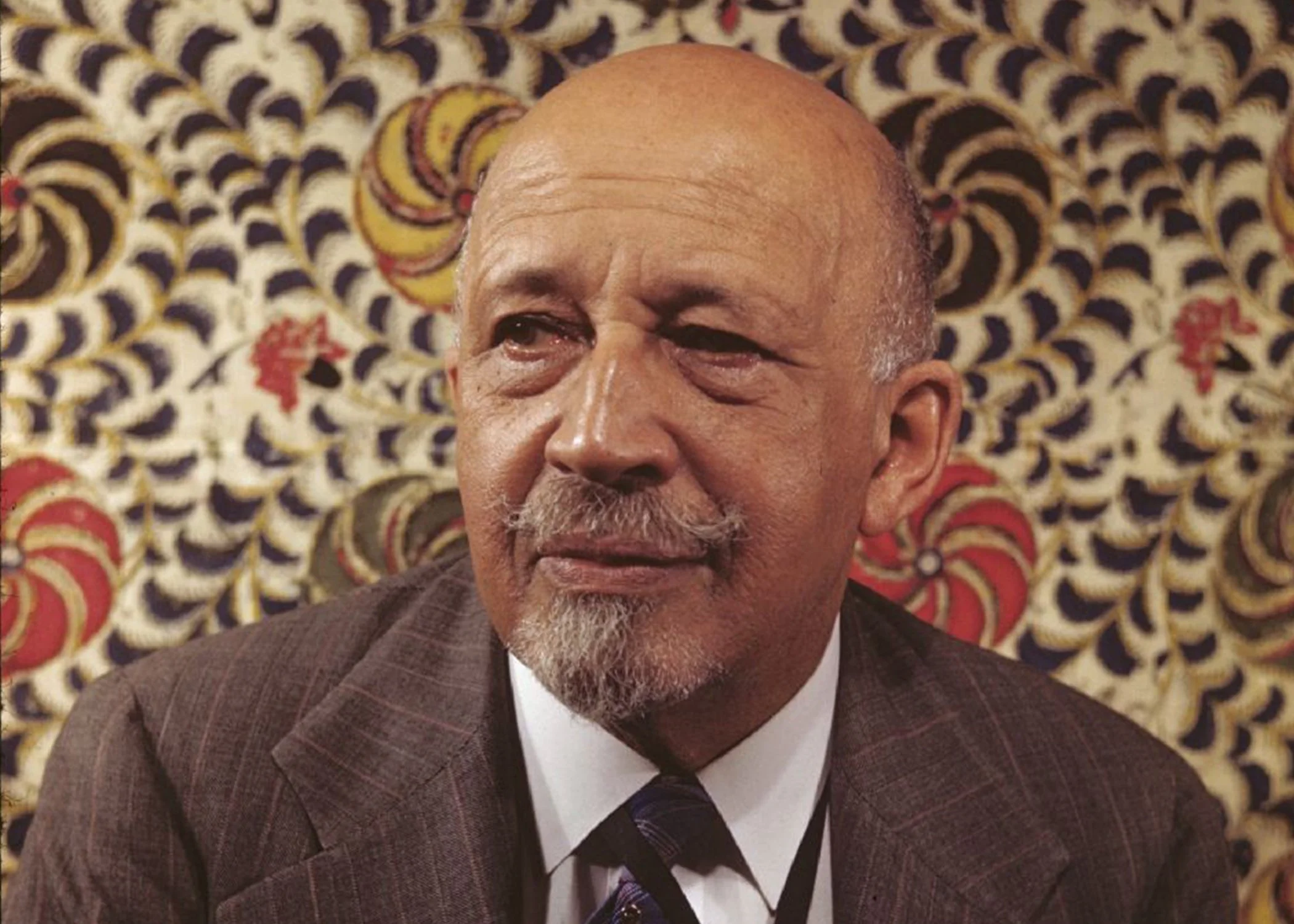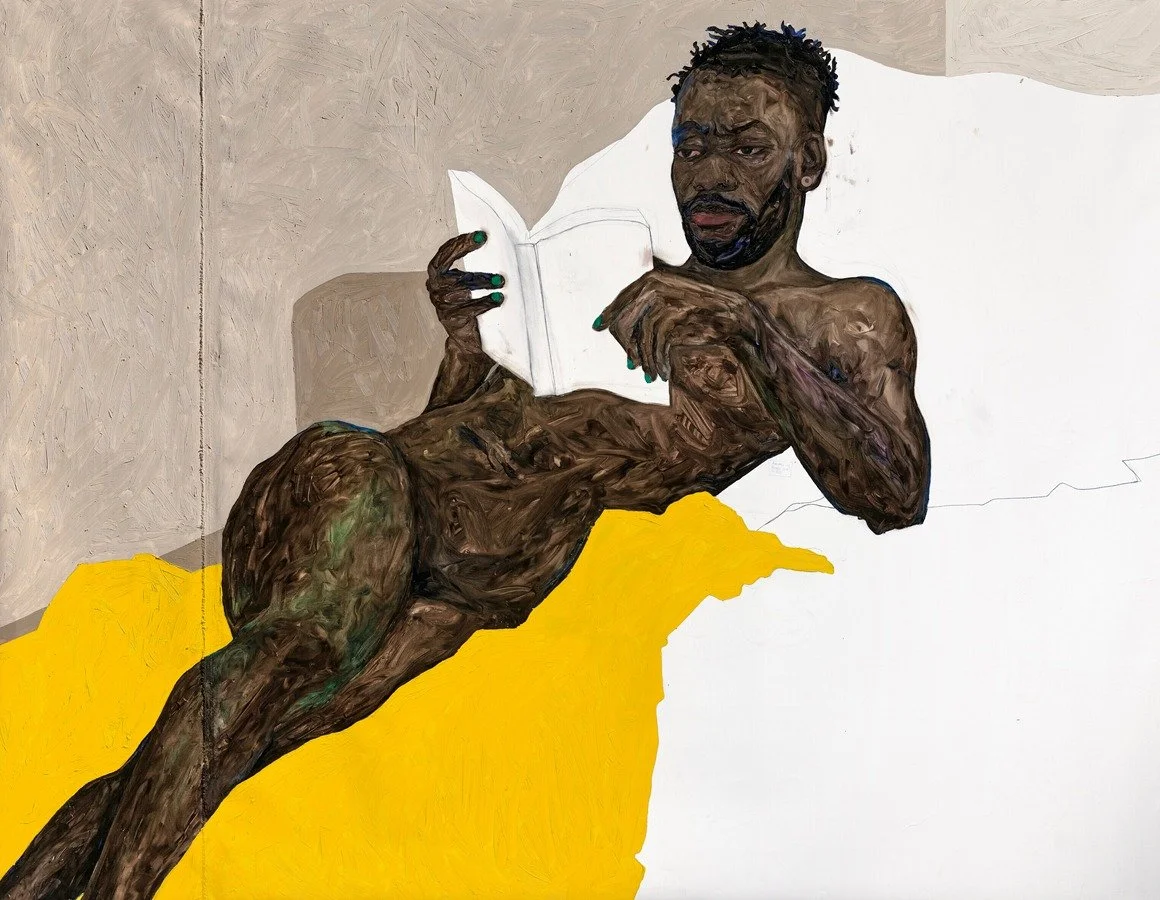Amoako Boafo & W.E.B. Du Bois : The Souls of Black Folk
Amoako Boafo is a Ghanaian painter who was born in Accra, Ghana and lives between his native land and Vienna, Austria. As being part of the African Diaspora, his work is tinged with both identities, African and Occidental.
W.E.B Du Bois was born in 1868 in Massachussetts, United States and died in 1963 in Accra, Ghana. He was the first African American to earn a doctorate in Harvard University. As a sociologist, socialist, historian, and Pan-Africanist civil rights activist, he was a professor at Atlanta and was one of the founders of the National Association for the Advancement of Colored People (NAACP) in 1909.
In octobre 2021, the Ghanaian artist, Amoako Boafo started an Exibhition entitled Soul of Black Folks in the MUSEUM OF THE AFRICAN DIASPORA in San Francisco, United States. He refered to the famous book written by W.E.B Du bois in 1903, The Souls of Black Folk. From here, we may wonder what are the connections we can establish between their work.
First, we have to define the concept of “double consciousness” which is the key to understand the writing of Du Bois. He asserts that black people must always look at themselves in a double way. They are conscious of what they are but also of what people think they are. In other words, they always have to see themselves in other people’s eyes.
“It is a peculiar sensation, this double-consciousness, this sense of always looking at one’s self through the eyes of others, of measuring one’s soul by the tape of a world that looks on in amused contempt and pity.”
A. Boafo gives this perspective in his work by focusing on portraying postures, the shades of the skin and steady gazes. He stages characters in a way that invites a specific connection with the spectator, his point of view. Moreover, he uses a painting with fingers technique in order to represent marks of the skin and a certain flow inside the character. We could interprete that as a representation of a stream of consciousness. Indeed, it depicts the thoughts of the character and allow the spectator to enter into its humanity. Combining that this flow of consciousness is merged into the skin and the emotion conveyed by his paintings, we understand the deep connections between skin complexion and double consciousness. A. Boafo spreads the complexity of being Black in today’s society.
Furthermore, the interconnections between Boafo and Du Bois are very significative. Du Bois refused the U.S citizenship to stay in Ghana and stand by Kwame Nkrumah, the first Ghanaian president (1960-1966). He claimed his vision of Pan-Africanism and tried to unite African people. We find this idea in the multicultural work of Boafo, who at the opposite immigrated to Austria.
Yellow Blanket



